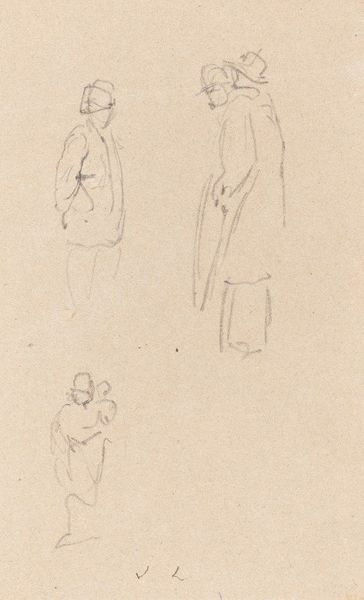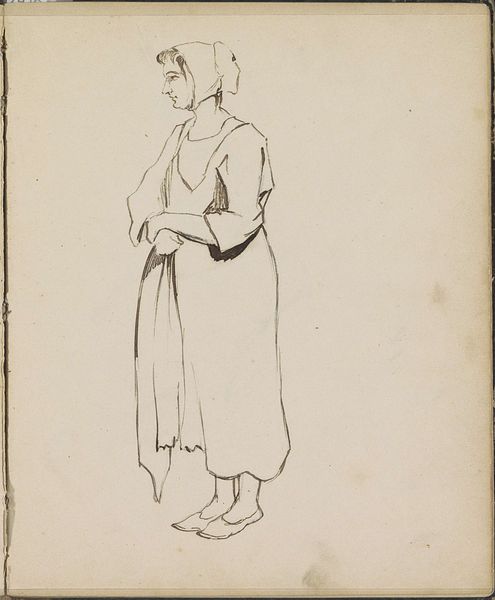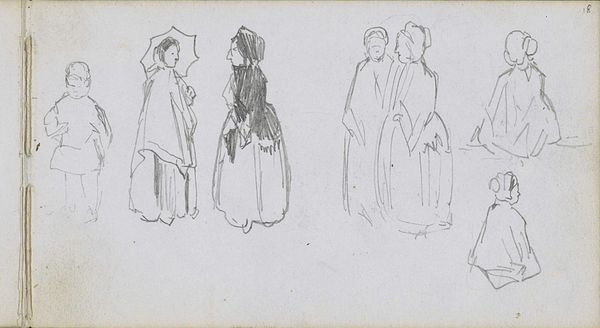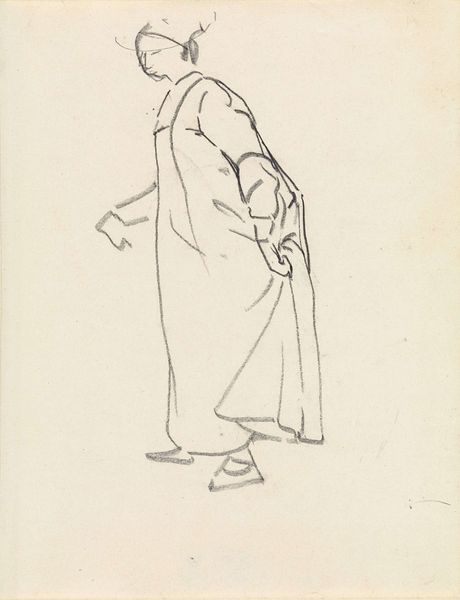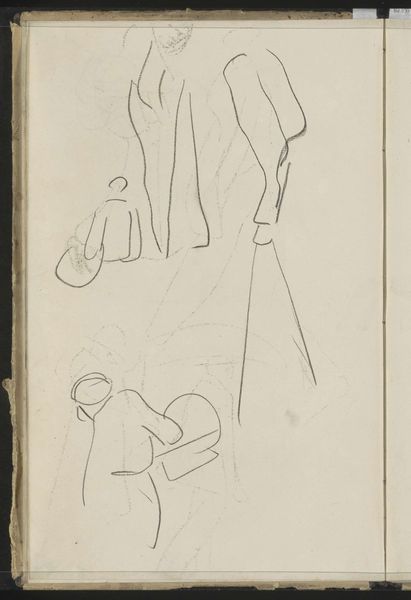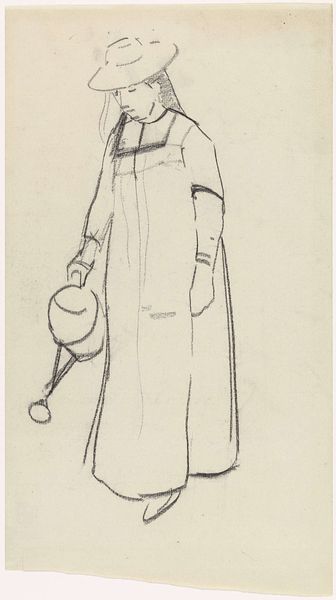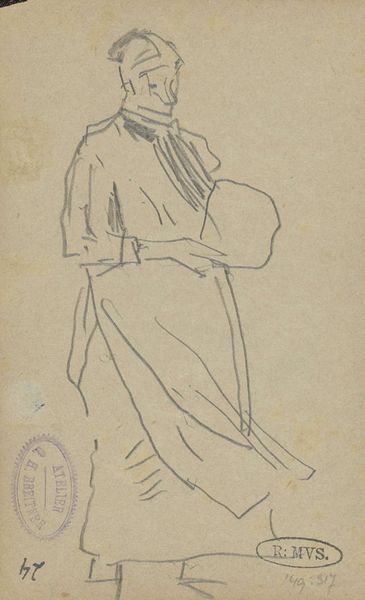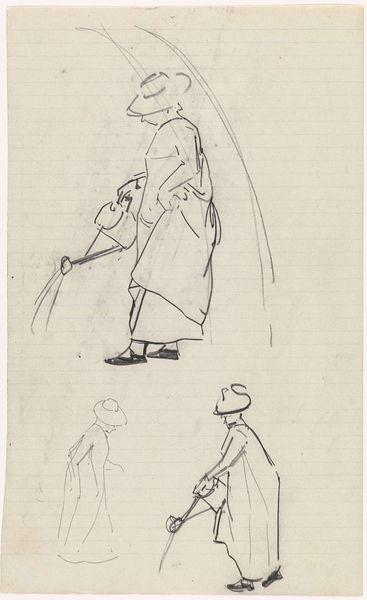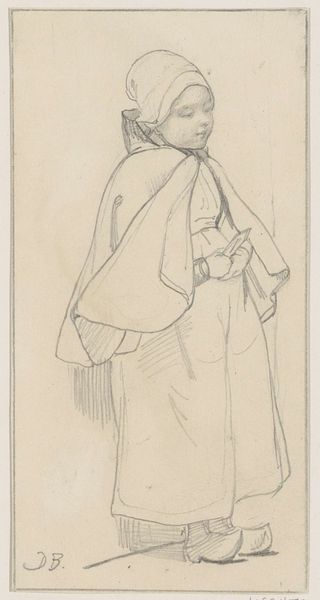
Studies voor kalender van 1901: staande vrouw die planten water geeft 1876 - 1924
0:00
0:00
drawing, pencil
#
portrait
#
drawing
#
light pencil work
#
quirky sketch
#
figuration
#
personal sketchbook
#
idea generation sketch
#
sketchwork
#
character sketch
#
pencil
#
sketchbook drawing
#
fashion sketch
#
sketchbook art
#
initial sketch
Dimensions: height 505 mm, width 407 mm
Copyright: Rijks Museum: Open Domain
Gerrit Willem Dijsselhof created this drawing, "Studies for a calendar of 1901: standing woman watering plants," using graphite on paper. The composition is simple, featuring two sketches of a woman, rendered with a light, almost ephemeral touch. The artist’s lines are economic, defining the contours of her figure and the gentle curve of the watering can. The sketch lacks depth or shading, emphasizing the flatness of the page. The posture and placement of the women direct the gaze across the surface of the work. Dijsselhof’s aesthetic shares affinities with the symbolist movement, which rejected the superficial naturalism of earlier art in favor of delving into the realms of myth, dream and the inner life. He uses semiotic codes to explore themes of labor and nature. The lack of background detaches the figures from any specific locale, allowing the viewer to interpret the image through their own lens. The drawing's delicate lines create a contemplative viewing experience, inviting us to consider the interplay between form and meaning in art.
Comments
No comments
Be the first to comment and join the conversation on the ultimate creative platform.
